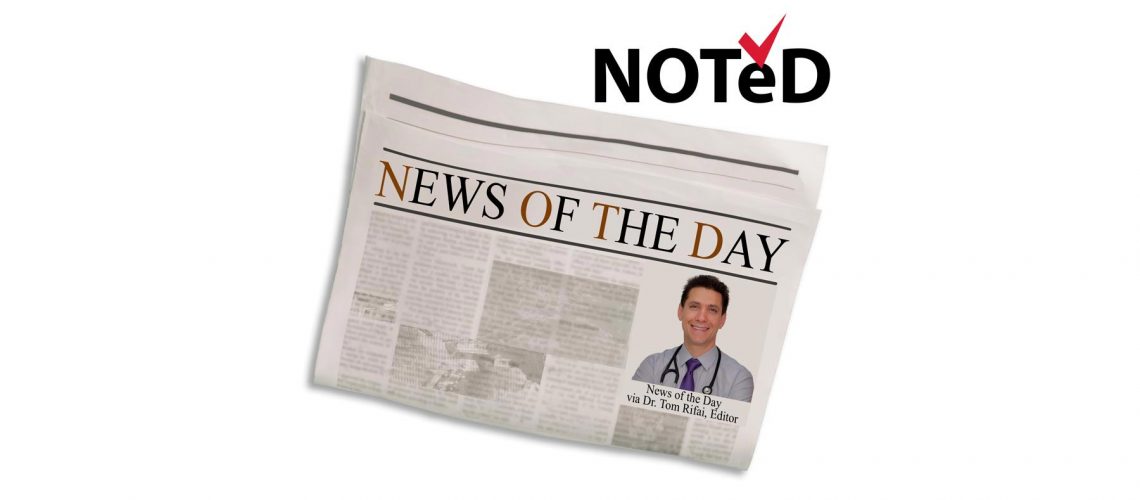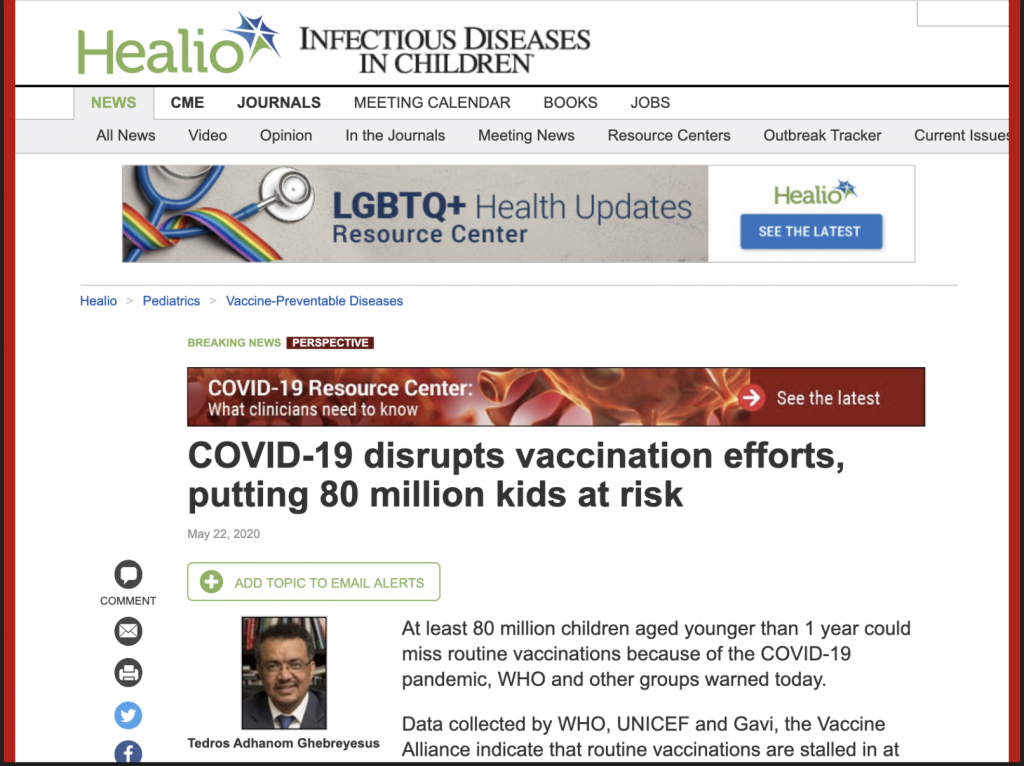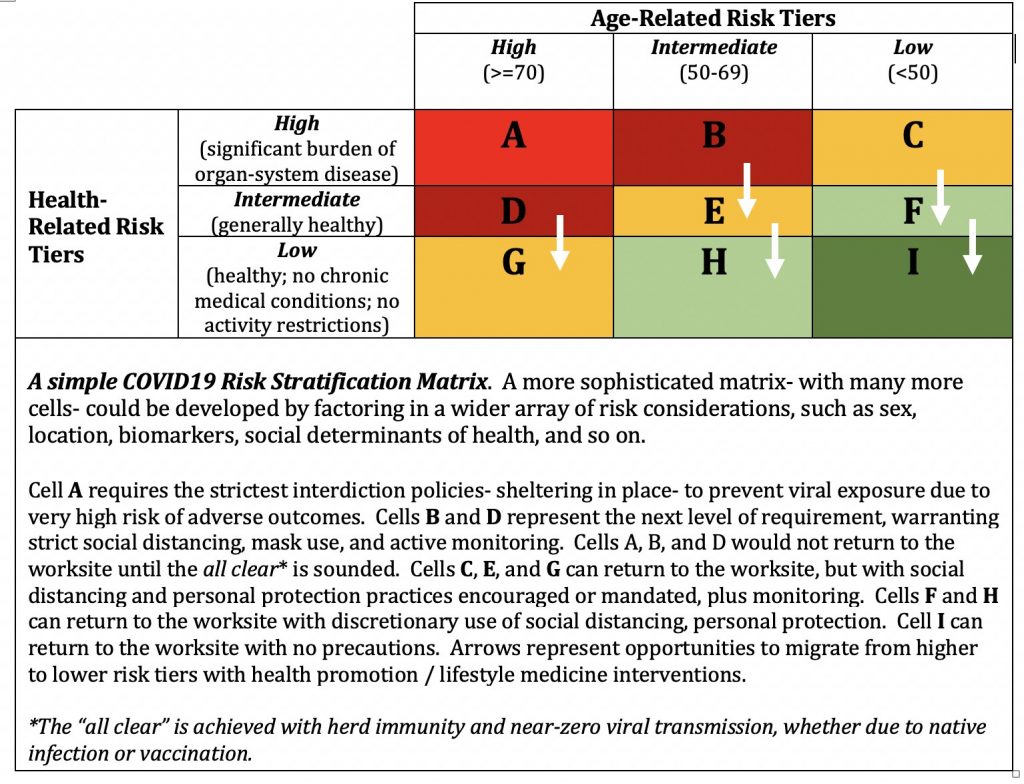Home » NOTeD: Is the Coronavirus “Disappearing” or “Here to Stay?”
NOTeD: Is the Coronavirus “Disappearing” or “Here to Stay?”

IN TODAY’S MEDICAL NEWS: Is the Coronavirus “Disappearing” or “Here to Stay?”
Bloomberg’s May 24, 2020 article, “Oxford University Vaccine Trials Run Into Hurdle,” notes both that “it’s a race against the virus disappearing” while also saying “there’s a chance the disease may be here to stay.” So, which is it? Is the Coronavirus “disappearing” or “here to stay?” With the inconsistent and contradictory messaging we receive, even within the same article like this, it is no wonder that people are confused and scared.
To filter through what seems like a roller coaster of mutually contradictory information and hone in on a balanced perspective-based undeniable risk stratification assessment, we need to look at the big picture. In the United States and much of the world, over 80% of COVID-19 deaths have occurred in those over the age of 65. Sadly, a massive fraction of those tragic deaths, including the majority of them in many states, have occurred in long-term care facilities. These types of facilities should be a major focus of our protection efforts, rather than a one-size-fits-all approach of blanket stay-at-home, mass business shutdowns. Implementing the total harm minimization approach (#TotalHarmMinimization) that THI’s President and founder, Dr. David Katz, recommended in the first half of March would very likely have saved lives, as well as potentially decreased the wait to achieve herd immunity in a safer, more facilitated manner.
Is Coronavirus Disappearing?
The hard truth is that COVID-19 (SARS-CoV2) is unlikely to “go away.” It is also unlikely that we will reach herd immunity with a vaccine anytime soon. Though we can all hope and pray (as I am) for our colleagues to quickly create a safe vaccine for the entire population, there has never been a successful vaccine against any coronavirus..
Trying to suppress COVID-19 by closing schools and businesses combined with all-encompassing stay-at-home orders is likely folly and only pushes back the date that we reach herd immunity. In my home state of Michigan, these policies, (still in play until the middle of next month) have economically ravaged the state of Michigan and devastated the health of untold others.
Coronavirus Causing Other Health Concerns
Stay-at-home orders and business closures have had ripple effects on non-COVID-19 health concerns. Fort Worth, Texas responders report a 164% increase in “dead on scene“ calls for cardiac arrest. This is unlikely to be an isolated phenomenon. Consider that increase was concomitant with a 1/3 decrease in calls to 911 and we get a glimpse of what is so concerning about COVID-19 deaths. The most massive killer of all, which for decades has taken almost 2000 lives per day and causes over 600,000 deaths per year, is heart disease. We rarely hear about these deaths, and the true tragedy is that early death from heart disease is likely preventable in 80% of cases.

COVID-19 Impact on Cancer Treatments
Another major health repercussion that we are very concerned about is is the potential long lasting impact on our second biggest killer, cancer. Statistically, we know that we are bound to see early deaths from all types of cancer due to missed diagnoses and delayed therapies. The Institute of Cancer Research, London researchers found that in England, thousands of lives could be lost to delays in cancer surgery during COVID-19 pandemic. The team reported that “a delay of three months across all 94,912 patients who would have had surgery to remove their cancer over the course of a year would lead to an additional 4,755 deaths.”
Healthcare and Welfare of Our Children
One of the toughest topics in this discussion of health determinants is how children are affected. As a father of a three and five-year-old, seeing cases of a very rare, but potentially deadly, inflammatory syndrome (akin to Kawasaki disease) brought on by the virus is heartbreaking.
However, it is also critical to note the damage that occurs to children by virtue of policies that are driving up depression, alcohol and substance abuse in their parents, and depriving children of the exposure and socialization skills of school – especially in the face of their exceedingly low risk of COVID-19. And in the face of some tough data coming from Sweden, it looks like at least one aspect of the Swedish COVID-19 experience has worked – the maintaining of primary schools’ hours with virtually no deaths in children nor teachers. The Public Health Agency of Sweden reports that it “does not currently consider it necessary to close all schools in Sweden. There are no scientific evidence indicating that such an intervention would have any significant impact on the pandemic, nor has any major transmission of COVID-19 in schools been reported.” Additionally, Icelandic data has revealed no evidence of COVID-19 transmission from child to parent.
COVID-19 is also interrupting proper immunization for millions of children around the world, putting them at risk for diseases such as polio and measles, according to organizations like UNICEF and the World Health Organization.

The Centers for Disease Control and Prevention (CDC) examined two studies that determined the effects of the coronavirus shut down on vaccination coverage. The CDC reports that “the identified declines in routine pediatric vaccine ordering and doses administered might indicate that U.S. children and their communities face increased risks for outbreaks of vaccine-preventable diseases.”
Coronavirus is not disappearing, and neither are the serious corollary healthcare challenges the COVID-19 virus is causing.
Here to Stay: The Need for #TotalHarmMinimization
While the list of health impacts from COVID-19 policies could go on, the risk of COVID-19 should not be diminished. Including this risk into a larger overall picture could ultimately help reduce the total harm that we bring onto ourselves by attacking COVID-19 in the smartest data-available driven ways possible: that is, #TotalHarmMinimization.
Such decisions largely rest on a more sober, calmer but still urgent risk assessment, with policies based on factoring in a wider array of risk considerations.
Vertical Interdiction: A Risk Stratification Matrix
The upshot in terms of balanced action, it seems to me, is a careful, calculated opening of primary schools and most, if not all, businesses with clear, concise public messaging regarding risk categories and hygiene recommendations to allow (yes, I said it) a low level of COVID-19 exposure among the willing of the approximately 2/3 of us who are at low risk (particularly under the age of 65 and in good health), while we provide the most compassionate and full-on protection of those at highest risk of COVID-19. The table below exemplifies one way of configuring this #VerticalInterdiction strategy:

Approaches along these lines represent a balance between taking COVID-19 with all seriousness, while allowing room for discussion and policy pivots to address non-COVID-19 health and social issues, some of which are devastating to physical and mental health. We need to get to herd immunity or a meaningful level of total population resistance (i.e., considering not only antibodies against SARS-CoV2, but T cell-based immunity, which has been noted to be a potential player in COVID-19 resistance seemingly secondary to previous coronavirus infections such as those causing many common colds) as safely and quickly as possible, but with an eye on our society’s other health concerns.
Smart and broad-view policies may just help us navigate between the rock and the hard place we find ourselves in. There’s still time, and hope. And we could all use some of that, minus the contradictory cacophony of COVID confusion.

